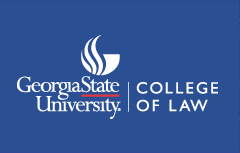Document Type
Article
Abstract
The controversy surrounding NFL player Colin Kaepernick’s act of kneeling during the national anthem in protest of police brutality against people of color continues to permeate public discourse. In March 2017, President Trump referenced Colin Kaepernick’s symbolic act during a rally in Louisville, Kentucky, in an effort to illustrate his strong opposition to anyone kneeling during the national anthem. In this speech, President Trump stated that although many NFL franchise owners were interested in signing Colin Kaepernick, many were afraid of receiving a nasty tweet from him. Likewise, in another speech, President Trump stated, “I think it’s a great lack of respect and appreciation for our country and I really think they should try another country, see if they like it better.” Although President Trump is referring to professional athletes in both of the aforementioned public statements, what about the thousands of students who participated in the nationwide walkout to protest gun violence in the aftermath of the Parkland school shooting? Or the hundreds of youth football players that are kneeling during the national anthem in an effort to mimic their professional idols?
This article takes the position that students have the constitutional right under the First Amendment to engage in expressive activities, political speech, and symbolic speech without interference or censor
from the state. Certainly, schools can educate, but they cannot indoctrinate based on a prescribed orthodoxy. Therefore, any attempts to limit or discipline students from participating in expressive activities, such as social protests, in K-12 schools that does not cause a material disruption to the learning environment is unconstitutional. Currently, students’ First Amendment rights in K- 12 schools reside in a sea of ambiguity where the Supreme Court has acknowledged that students are considered ‘persons’ under our Constitution and thus entitled to fundamental rights, such as freedom of expression, yet in the same vein marginalize those same rights in subsequent decisions by permitting school authorities to limit freedom of speech under certain circumstances. This article offers a path toward safeguarding students’ First Amendment rights to engage in expressive activities, political speech and symbolic speech in K-12 schools by amending existing anti-Hazelwood statutes to explicitly include protections for student social protests, as long as such conduct does not cause a material disruption to the school learning environment. Furthermore, the proposed amendment to anti- Hazelwood statutes will limit the reach of Tinker’s Material Disruption Standard so that school officials do not have unbridled discretion to censor student expression.
Recommended Citation
Laura R. McNeal,
Hush Don't Say a Word: Safeguarding Student's Freedom of Expression in the Trump Era,
35
Ga. St. U. L. Rev.
(2019).
Available at:
https://readingroom.law.gsu.edu/gsulr/vol35/iss2/1
